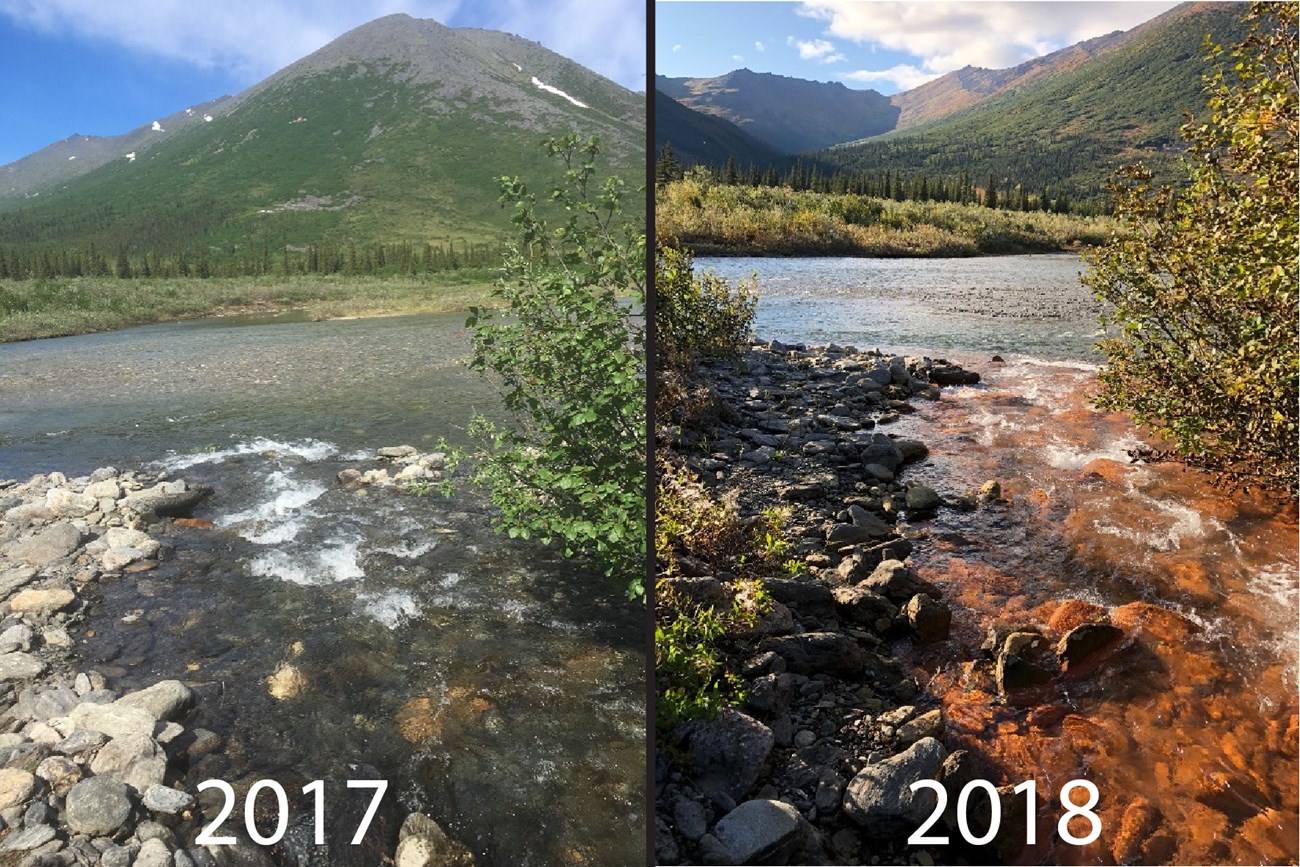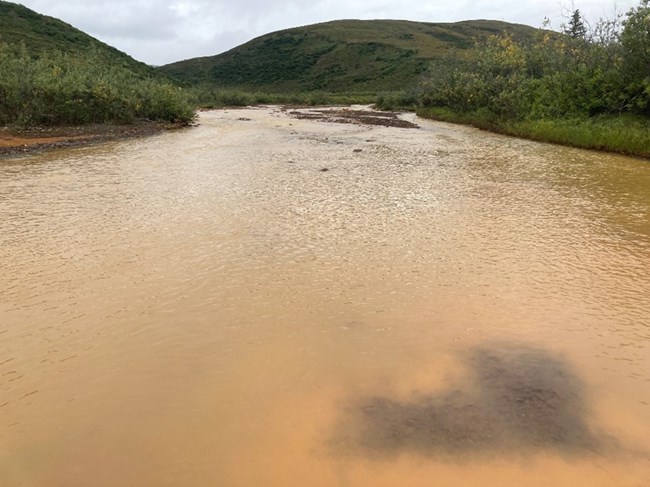Last updated: December 20, 2023
Article
Rusting of Wild and Scenic Rivers in Alaska Arctic National Parks
Jon O’Donnell, National Park Service
Mike Carey, U.S. Geological Survey
Josh Koch, U.S. Geological Survey
Patrick Sullivan, University of Alaska

NPS / Jon O'Donnell
The Arctic is warming at a faster rate than other regions across the globe, with considerable consequences for terrestrial and aquatic ecosystems. One consequence of warming is thawing of permafrost, or ground that typically remains perennially frozen. Permafrost thaw can impact rivers by altering runoff and groundwater inputs to streams. This shift in hydrology can also alter stream water quality. Prior work has shown that warming and permafrost thaw can allow water to infiltrate and move through deeper soil layers. Increased water residence time within the soil allows higher rates of microbial processing, and greater exposure to nutrients and minerals found within the soil. Implications for water chemistry include changes in organic matter composition and increases in nutrients, base cations, and other trace metals in stream water. Over the past few years, scientists have observed a new phenomenon related to thawing soils: streams which have turned a vibrant orange color across Alaska’s Arctic. Of particular concern is the recent discoloration of the Salmon Wild & Scenic River in Kobuk Valley National Park.
Prior to 2019, the Salmon River was running clear and data generated by the National Park Service (NPS) Arctic Inventory & Monitoring Network indicated that water quality in the river was pristine. Suddenly, during the summer of 2019, the clear waters of the Salmon turned distinctly orange-green. Three summers have now passed, and the Salmon River remains discolored with opaque turbid waters and orange stains on the banks. Preliminary data indicate that this discoloration is due to the mobilization of iron from soils to streams. Little is known about the cause(s) and consequences of this dramatic shift in water quality, but an interdisciplinary group of federal and university scientists are working to better understand and address the problem through a grant from the USGS-NPS Water Quality Partnership Program.

University of Alaska Anchorage / Patrick Sullivan
Permafrost thaw may be contributing to discoloration of the Salmon River by exposing iron-bearing minerals that were previously frozen and are now subject to weathering and hydrologic transport. Data indicate orange stream reaches are more acidic and turbid than un-impaired stream reaches. In one small headwater stream of the Akillik River in Kobuk Valley National Park, NPS and USGS scientists documented a decline in benthic macroinvertebrate abundance and diversity, along with a steep decline in the abundance of juvenile Dolly Varden (Salvelinus malma), a common resident fish species. Scientists and park managers are concerned that the “rusting” of Arctic rivers may represent a loss of habitat for both resident and anadromous fish (e.g., salmon), and thus a threat to subsistence activities.
To date, scientists have documented more than 30 orange streams and rivers across Alaska’s Arctic national parks and adjacent public lands. Unfortunately, the Salmon River is not the only Wild & Scenic River threatened by this disturbance. The Alatna Wild & Scenic River in Gates of the Arctic National Park has also experienced discoloration due to iron inputs. A key question is whether the orange stream phenomenon represents a temporary state or a more permanent shift in the water quality and health of these formerly pristine Arctic rivers. To begin to answer this question, scientists will continue field sampling efforts in summer 2023 to better understand the causes and potentially far-reaching consequences of the rusting of Arctic rivers.
Wild and Scenic River Currents
This article was featured in the 2023 edition of Wild and Scenic River Currents, the annual newsletter for the National Park Service Wild and Scenic Rivers Program.
